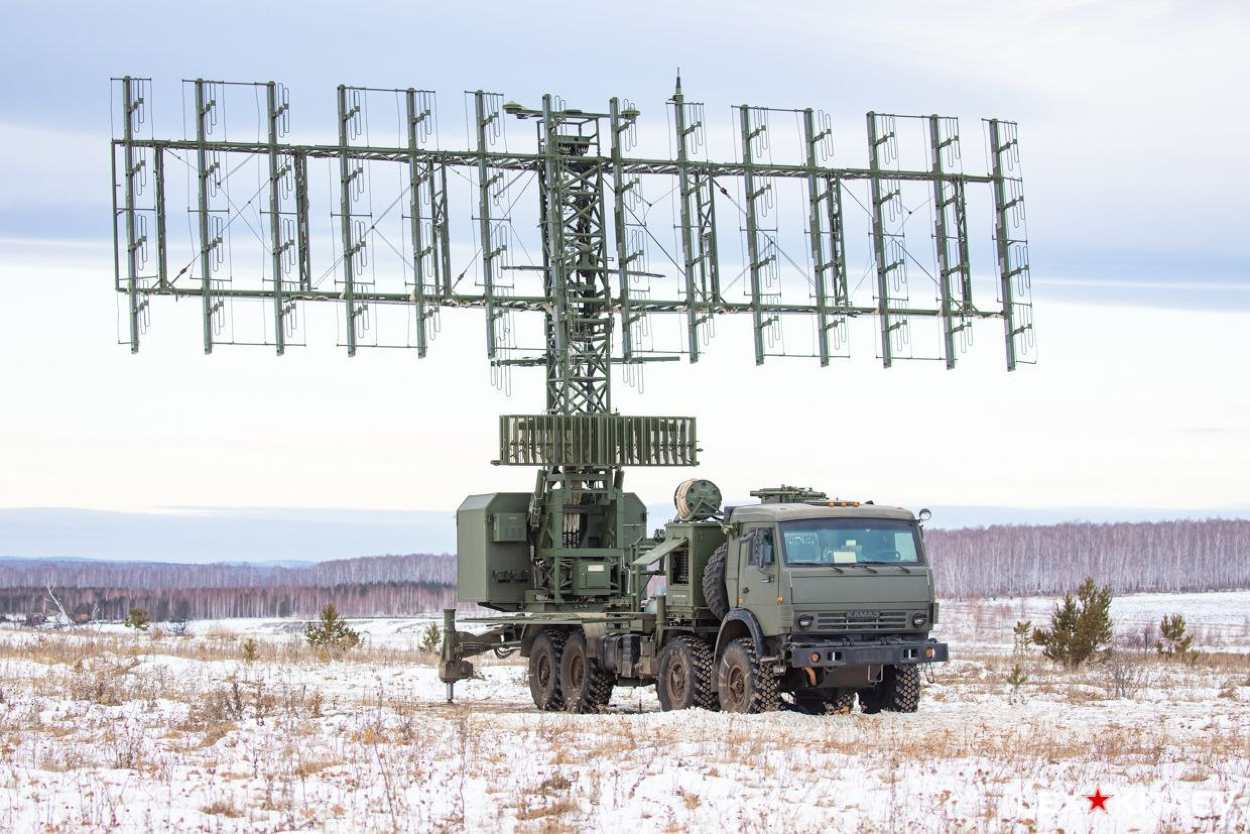On April 9, on the occasion of the Russian Day of Air Defense Forces, an official revealed that the Russian military was deploying the cutting-edge technology of ‘Niobium’ radar in Ukraine, which is used to detect aircraft, helicopters, drones, ballistic missiles, and MLRS rockets.
The commander of the Niobium radar station, Anatoly, spoke extensively to local Russian media Izvestia about the advantages of working with the advanced radar system and its combat benefits against Ukraine.
A video was also published by Izvestia showing how the combat duty of the Niobium radar crews of Russia’s ‘Western Military District’ was going. The report stated that Russian air defense systems repel enemy air attacks, including drones, multiple launch rocket systems (MLRS), and ballistic missiles.
Modern radar stations such as Niobium help to respond to these threats in time.
“The radar station is mobile, on standby. Designed to detect aerodynamic targets and determine national affiliations. Our task is to ensure the safety of our aviation, including unmanned aircraft. The tasks are complex and responsible. We issue information to higher command posts,” Anatoly said.
He emphasized that one of the duties of air defense is to thwart and destroy enemy equipment and lessen the potency of enemy strikes. This is possible because the Niobium radar apparently scans the sky within a radius of 500 kilometers while tracking hundreds of objects or potential targets at once.
The Russian Defense Ministry has released footage of crews operating ‘Niobium’ radar stations as the special military operation continues. The systems are capable of scanning the sky with a radius of 500km. pic.twitter.com/rWZTmohmwJ
— RT (@RT_com) April 9, 2023
The targets that are found hostile are then notified to the command post, which ultimately decides which Russian air defense unit will follow the target and destroy it.
In recent months, Ukraine is believed to have increased the use of drones to strike targets inside Russian-occupied territories and in cities close to Moscow. Kyiv’s frequent use of drones had earlier led to the Russian military installing air defense systems atop important buildings in Russia.
Russia’s Nobium Radar Builds On The Nebo-SV
The Niobium radar is designed to detect and track aerodynamic and ballistic targets, one capability that Ukraine has struggled with. Kyiv’s forces have admitted their difficulty intercepting Russian ballistic missiles, like the Iskander-M. However, the Patriot missile batteries delivered to Ukraine are expected to change that scenario.
In Russia’s Nobium radar, data processing is carried out automatically with the subsequent issuance of ready-made information to consumers. The Russian Ministry of Defense (MoD) explained that the system is capable of detecting enemy aircraft and helicopters, as well as drones made of composite materials that are difficult to detect.
According to Commander Anatoly, the system is very ergonomic to work with, easy to be trained on, and relatively easier to use. He also informed the media that the radar system manufacturers come and offer comprehensive support on the system.
The data collected from all radar complexes form a general picture of the sky. This allows one to quickly make decisions on targets, the most common of which are drones.
In June last year, the Russian defense ministry showed the operation of another set of Nebo-SV radar stations. At the time, the MoD informed that the Nebo-SV operated on all frequencies and churned out a lot of data.
Observing the sky, the system allowed spotting an enemy helicopter a few kilometers from its position. And even a small drone will not escape the eye of the observer either.

With the Nobium radar in focus now, experts believe it is a variant of the Nebo-SV showed off by the Russian MoD almost a year ago. Indian Air Force veteran and military expert Squadron Leader Vijainder K. Thakur analyzed the deployment of the Nobium radar by Russia in a series of tweets.
Thakur deduced, “The 103Zh6 Niobium-M radar system is reportedly an optimized & more capable version of the 55Zh6M Nebo-M radar system.” He further explained that the Nebo-M, a self-propelled radar system, combines three AESA radars in the Very High Frequency (VHF), Ultra High Frequency (UHF), and S/X radar bands, and a single processing and command van.
“Fusion of data from the three radars creates a robust kill chain. The VHF system performs initial detection and cues the UHF radar, which in turn can cue the X-band radar for weapons-grade tracking. VHF radar is capable of tracking a stealth target like the F-22. UHF radar can track LO targets, such as ballistic missiles & artillery rockets. Higher-frequency radars are more accurate than VHF radar.”
This means that together they can focus on a specific target to increase the likelihood of successful tracking and detection.
Thakur explained in his tweets that the Niobium was created using a modern component base. According to reports, the radar complex’s technical specifications are superior to those of the operational Nebo M radar complex, which makes it a force to reckon with.
“Niobium features a better detection range of various types of aircraft, including hypersonic ones.” However, EurAsian Times could not independently corroborate this information.
Thakur also suggested the integration of the Niobium radar with Russia’s cutting-edge air defense systems.
“Niobium can exchange processed targeting data with AD missile systems like Pantsir, S-300, and S-400. While it’s moot whether Ukraine is ready for its much-hyped counteroffensive, there can be little doubt that Russia is!” he added.
- Contact the author at sakshi.tiwari9555(at)gmail.com
- Follow EurAsian Times on Google News




